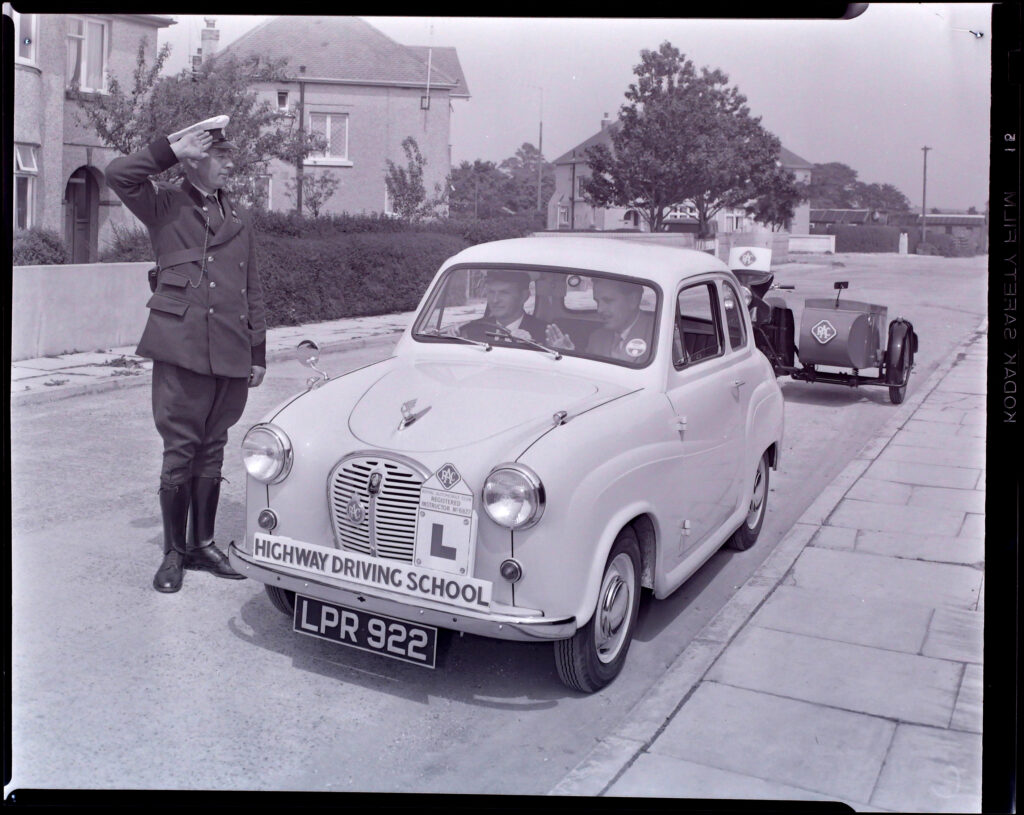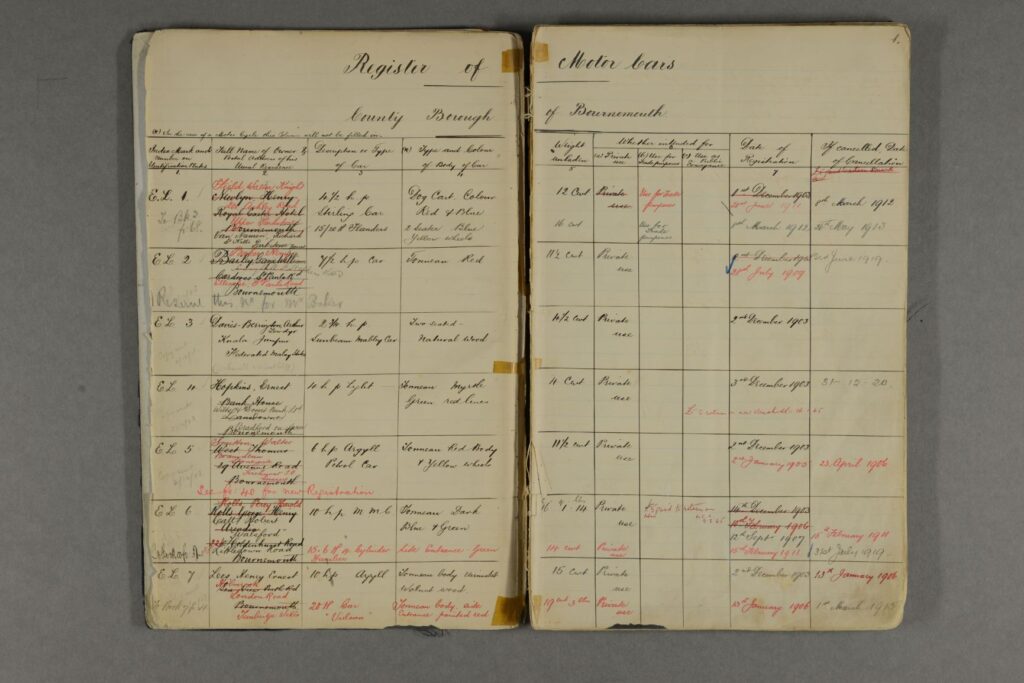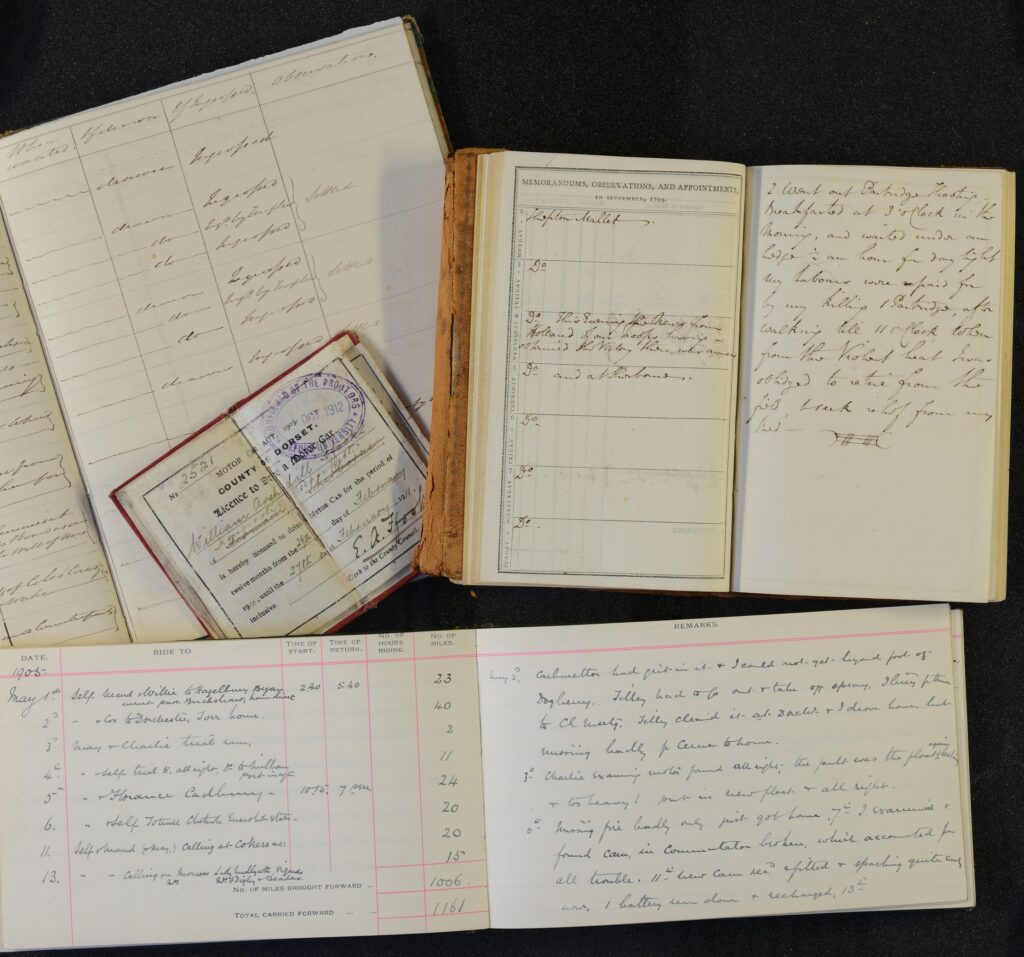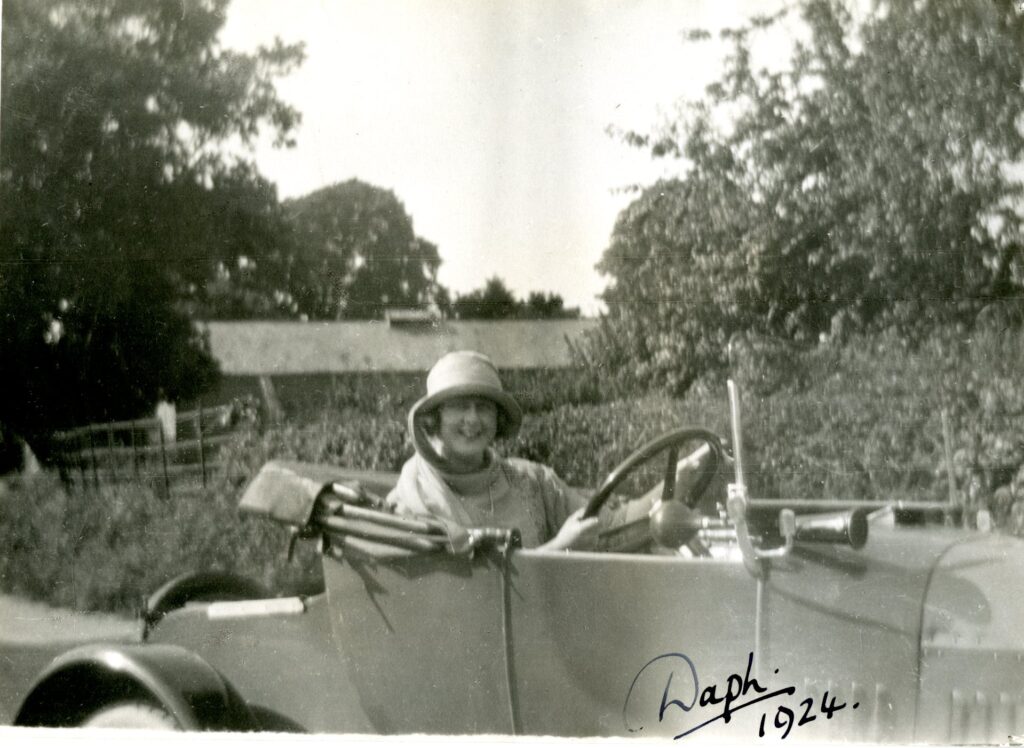One of Dorset History Centre’s team has recently passed a driving test, and this, coupled with a photograph from the Herbert Collection inspired a deeper look into the archive!
—
The roads of Weymouth have certainly changed and so too have motor vehicles and driving lessons. It was amusing to see these two rather large men squashed into a small car in this 1958 promotional Highway Driving School photograph. Also noteworthy is the RAC officer in his Norton sidecar giving the famous salute, a far cry from the orange transit vans we see on the roads today.

Driving Instruction
Driver training began as a business in the UK in 1909-1910. The British School of Motoring (BSM) was founded in 1910 in South London by Hugh Stanley Roberts. It offered hands-on training and courses in driving skills, managing the controls and road aptitude, and repair. Offering vehicles to drivers who wanted to practice.
Driving Licence
The first British driving licences were brought in by the Motor Car Act 1903. All motor vehicles had to be registered, display registration marks and be licensed annually at a cost of 20 shillings.

In the Fooks archive we have an early driving licence from 1911 belonging to William Archdall Fooks with a logbook detailing rides in May 1903. Some are trial runs, mostly local with the number of miles travelled and the time it took. Interestingly in ‘remarks’ a log is kept of car trouble and issues had driving home – having a flat battery, it seems, is not just something that we have an issue with today!

The first British woman to pass a driving test was Vera Hedges Butler who went all the way to France in 1900 to take her test in Paris. The driving test did not come to Britain until June 1935. That didn’t stop Daphne Bankes though, pictured below, who is captured enjoying driving her motor vehicle in 1924.

Women were generally considered safer drivers
‘…As a rule, women have too much to lose by careless or reckless driving. No woman is desirous of being smashed up herself, and she has peculiar care for those who are with her. She also takes a certain pride in successful driving, which may abate somewhat as more of her sex distinguish themselves in that direction. Further, she has the very greatest dislike to fines and penalties, and is ordinarily more inconvenienced by paying them than are men’
The Woman at the Wheel Archive 25 May 1914: Whatever the case for or against her, the woman driver has come to stay, published in The Guardian
Driving Test
Compulsory testing was brought in on 1 June 1935 for all drivers and riders who started driving on or after 1 April 1934:
- around 246,000 candidates applied
- the pass rate was 63% much higher than the 45.9% pass rate in the UK for 2019/2020.
- between 9 and 16 half-hour tests were conducted each day by 250 examiners
Some Interesting Facts
- Nationally Mr Beere was the first person to pass the driving test in 1935: he paid the grand total of 7s 6d (37.5p) to take the test.
- There were no test centres in 1935 so you had to arrange to meet the examiner somewhere like a post office, train station or town hall.
- The test was suspended for the duration of World War 2 and didn’t resume until 1 November 1946.
- Since 1935 more than 46 million tests have been taken!
Other things to consider are how the tests have changed over the years, and the evolution of the Highway Code – something to talk more about in a later blog!

